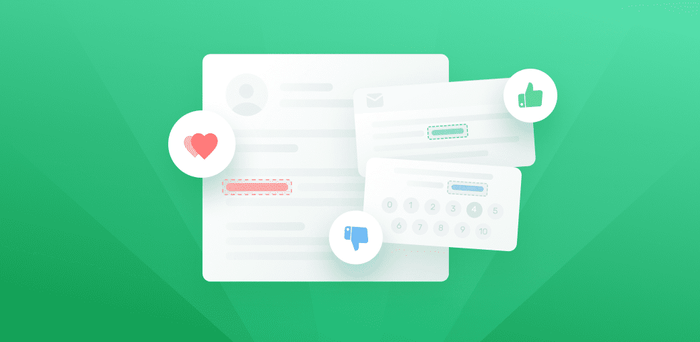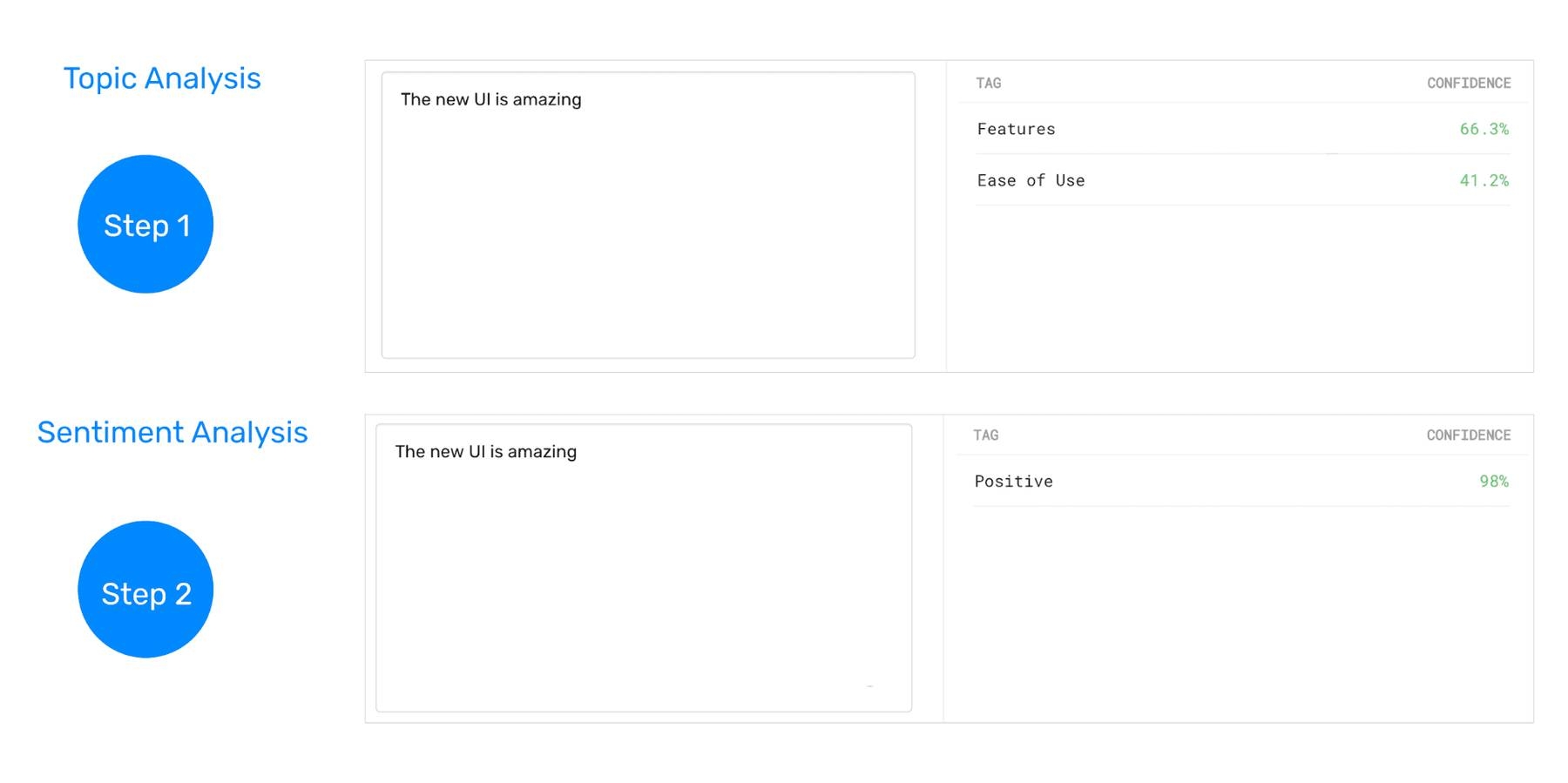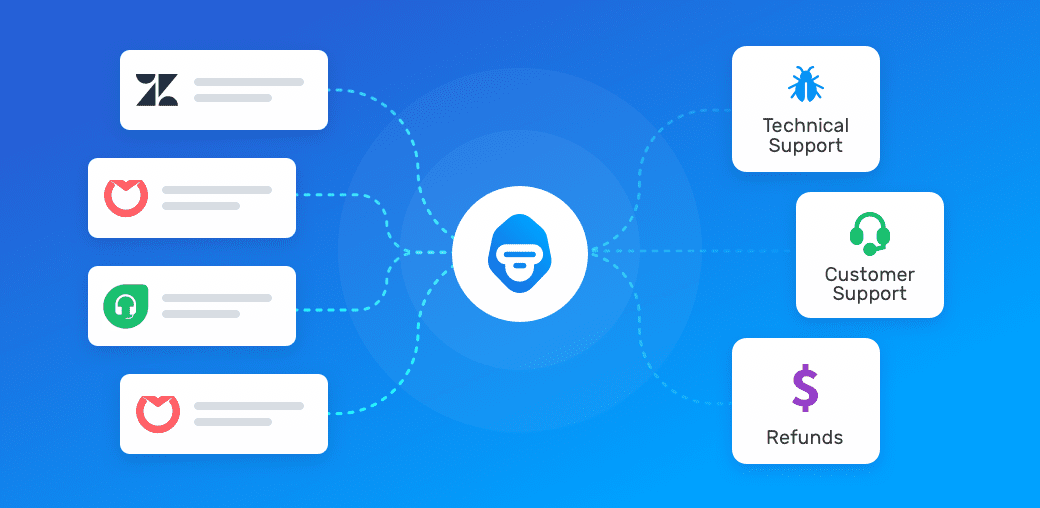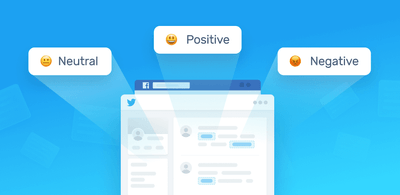What Is Opinion Mining & Why Is It Essential?

One of the key aspects of any successful business is knowing how your customers feel about your brand and your products. They often freely express their views and opinions on social media, or in product reviews, surveys, and beyond, providing a wealth of information about your customer’s thoughts and feelings.
But with data growing by the day, it’s impossible to manually analyze this mass of information. That’s where opinion mining comes in. This natural language processing (NLP) technique allows you to go beyond mere numbers and statistics, to automatically understand the feelings and emotions of your customers.
Read on to learn more, or jump to one of the sections below.
- What Is Opinion Mining?
- Opinion Mining Techniques & Types
- Opinion Mining Applications
- Opinion Mining Tools
What Is Opinion Mining?
Opinion mining, or sentiment analysis, is a text analysis technique that uses computational linguistics and natural language processing to automatically identify and extract sentiment or opinion from within text (positive, negative, neutral, etc.).
It allows you to get inside your customers’ heads and find out what they like and dislike, and why, so you can create products and services that meet their needs. When you have the right tools, you can perform opinion mining automatically, on almost any form of unstructured text, with very little human input needed.
Are there certain aspects of your business that receive regular accolades but others that are just lukewarm, or worse? Do you want to perform market research to see how sentiment toward your brand compares to that of your competitors?
Sentiment analysis can process thousands of pages, comments, emails, or surveys in just minutes for real-time results. Or you can perform opinion mining over time to see how sentiment classification rises or falls.
NLP software allows you to train models to the specific terminology and criteria of your business for a consistently accurate and objective analysis of your customers’ conversations. Save time and money and leave behind the wavering subjectivity of manual human processing.
Opinion Mining Techniques & Types
Opinion mining and sentiment analysis models can focus on polarity of opinion (positive, negative, neutral), personal feelings (angry, happy, sad, etc.), and intentions or objectives (interested or not interested).
Below, we’ve outlined some of the most popular types of opinion mining:
- Fine-grained sentiment analysis
- Emotion detection
- Aspect-based sentiment analysis
- Multilingual sentiment analysis
Fine-grained sentiment analysis
The most common use of opinion mining works to categorize comments and statements on a scale of opinion polarity. This can be simply positive, negative, or neutral, or you can go beyond this into fine-grained sentiment analysis with a larger scale of categories that include:
- Very positive
- Positive
- Neutral
- Negative
- Very negative
This is commonly used in opinion polls or surveys, as:
- Very Positive = 5 stars
- Very Negative = 1 star
However, text analysis tools allow you to analyze open-ended survey responses or track sentiment on social media, for example and categorize texts into pre-defined sentiments. It’s a method for quantifying qualitative data.
Try out this pre-trained sentiment analyzer:
Emotion detection
This is opinion mining aimed at finding and extracting specific emotions (anger, disappointment, irritation, happiness, etc.) from text. Some emotion detection tools use lexicons, or word lists defined by the emotions they denote. This can be problematic as some words that often convey negative emotions, like bad or kill could also be used to express happiness or approval: “Your brand is killing it!”
Advanced machine learning algorithms, on the other hand, allow text analysis programs to learn directly from sample text, so they can understand the nuances of human language, even to the point of detecting irony and sarcasm.
Aspect-based sentiment analysis
When opinion mining text about your brand, you’ll probably want to organize it into categories. If you’re analyzing customer feedback, for example, you’d be able to categorize the text into aspects, like Usability, Features, Shipping, etc., then analyze each statement as positive, negative, or neutral.
Aspect-based sentiment analysis would read the comment: “The new UI is amazing,” as a positive opinion about the feature, “User Interface.” See how it works in this example, below:

Multilingual sentiment analysis
Multilingual sentiment analysis is often very difficult, as it involves a lot of preprocessing and resources. Some resources, like sentiment lexicons, are available online, while some, like translated corpora and noise detection algorithms, have to be built. And you’ll need coding experience to put them into practice.
MonkeyLearn’s language classifier, on the other hand, automatically detects the language of a text, then you can train a custom opinion analyzer to classify text in the language of your choice.
Top Opinion Mining Applications in Business
Opinion mining offers a window into the thoughts and feelings of the public, allowing businesses to improve the customer experience, perform competitive research, and understand opinions.
Some of the most popular opinion mining sentiment analysis applications are:
- Social media analysis
- Brand awareness
- Customer feedback
- Customer service
- Market research
- Evaluating marketing campaigns
Social media analysis
With approximately 6,000 tweets sent every second and 2.7 billion monthly active users (MAUs) on Facebook, the speed at which opinions move on social media is staggering. Just think how often your business is mentioned on social media.
It would be downright impossible to monitor social media mentions manually – there are just too many. Thankfully, machine learning tools allow you to perform social listening and social media opinion mining constantly, and in real time, so you’ll never miss a mention. Opinions about brands and products offered on social media are often the most truthful because the user feels compelled to offer them, unsolicited.
Get regular, dependable insights about your customers and the public at large. You can go back in time to find out when your company was trending and figure out why. And 24/7 social media monitoring allows you to respond to negative comments before they travel around the world, or reach out immediately to influencers when they mention your brand.
For example, food delivery company Seamless spotted this positive comment from a micro-influencer and reached out to ask about marketing material.

Brand awareness
Brand awareness is all about brand recognition – what does your business name, logo, etc. mean to the public? What emotions and feelings do different aspects of your business elicit? Having a strong brand image that evokes positive emotions is essential to remaining competitive.
Monitor news stories, social media, blogs, forums, etc., and find out what words and feelings your brand is associated with. Keep track of your brand over time or take a peek into your brand image at any given moment to monitor your progress. Find out the public sentiment of your brand, analyze the data, and transform it into actionable insights.
Customer feedback
Follow conversations about your product or brand and find out what’s working and what may need some work. This can be from surveys or customer service tickets, but you can also tap into all the public feedback available from online reviews, social media, and other web chatter. Even if statements or feedback aren’t directly targeted ‘@’ your company, you can opinion mine mentions of and conversations about your brand.
You can get into the minds of your customers to understand their feelings and the language they use. Keeping an eye on feedback allows you to engage directly with your customers in real time, and you can target new products, new campaigns, or specific user issues.
Customer service
Customer service can make a break a business, but sometimes companies don’t even realize they have poor customer service. Opinion mining can help to regularly analyze your customer service department’s communication with the public from chatbots, emails, online tickets, even phone calls. Are they using a consistent “corporate tone-of-voice?” Are the issues regularly resolved, or do your customers leave unhappy?
You can also collect regular customer service feedback from in-app or online surveys, customer support tickets, social media, and more, and automatically analyze it. Because, even more than just analyzing how your employees interact with customers, it’s important to understand how the customers feel about the interactions.
Opinion mining can be helpful from an internal customer service perspective, as well. You can set up sentiment analysis tools to automatically analyze incoming customer support tickets to read for the urgency of the inquiry (as well as level of annoyance), and automatically route the ticket to the right department or employee. You’ll never leave a customer in the cold again.

Market research
Opinion mine for trends in your market sphere to find out if there’s room for new products or if certain services are falling out of favor. Perhaps your brand is much more popular in a particular region or among a demographic. You can analyze customer feedback and online conversations to find out why.
You can use sentiment analysis for competitive research. Pull opinions about your brand and compare them to the competition. Analyze the websites and content of your competition to find out what works with their public that you may not have considered. Perhaps there is some aspect or new design of a competitor’s product that their customers hate – opinion mine their feedback to find out why, and institute a new design of your own that fixes the problem.
Evaluating marketing campaigns
Real-time opinion mining means you can follow public reaction as it rises and falls along with product launches or marketing campaigns. Target keywords related to your campaigns and find out why a campaign is working (or not). You can make custom sentiment analysis models trained to the language of your business and customers, so you’ll be sure to get the nuance of the conversations.
How do the reactions to different marketing campaigns compare? Find out which campaigns and what language works best. Or compare reactions to your campaigns against those of your competition to learn what you might do better.
Get Started with Opinion Mining Tools
So now you know what opinion mining can do, but how do you do it? You can use SaaS tools that are generally ready to go “right out of the box” or build your own with open-source libraries.
Building your own opinion mining models can provide amazing results, but you need quite a lot of data science and coding experience. Using SaaS tools still allows you to custom-train sentiment analysis models, and is much less expensive and time-consuming.
MonkeyLearn is a SaaS platform that can get you up and opinion mining in just a few minutes. MonkeyLearn’s powerful text analysis tools are a great low-code, to no-code option for sentiment analysis, and much much more.
Check out the sentiment analysis demo model to see how it works. Just enter your text and see the analysis. Or learn how to create a custom model in just a few simple steps. You may just be amazed at how quick and easy it can be to opinion mine real-world and real-time insights for your brand.
Finally, for a more in depth introduction to opinion mining tools, request a free demo.

Rachel Wolff
September 16th, 2020






